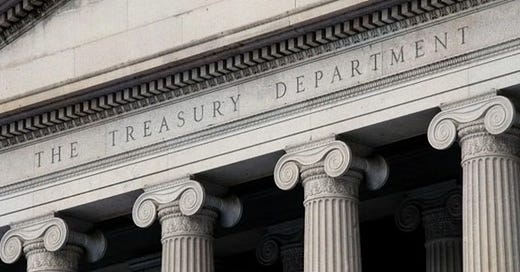Analysis of 30-Year Treasury Yields and Returns (2025–2030)
30-year Treasuries offer strong returns during falling yields, with price gains, income, and a hedge against equity volatility and economic slowdowns.
The chart below illustrates the projected changes in 30-year Treasury yields between February 2025 and January 2030. This period captures an initial decline in yields, followed by a steady rebound, reflecting market normalization and shifting economic conditions. The changes in bond yields represent an opportunity for investors to secure attractive returns over the next two years, provided actual results align with current assumptions.
Yield Movement Overview
Decline Phase (Feb 2025–Dec 2026):
Starting at 5.13% in February 2025, the yield drops to 4.42% by December 2026. This decline represents a significant yield compression, which is historically favorable for bond investors due to the associated price appreciation of long-duration bonds.
Rebound Phase (2027–2030):
Post-2027, yields gradually increase, reflecting the market’s expectation of tightening monetary conditions or rising inflationary pressures. By January 2030, the yield reaches 5.57%, above the starting level in early 2025.
Estimated Returns for the Decline Phase
If the bond is purchased in February 2025 at a yield of 5.13% and sold in December 2026 at 4.42%, the total return includes:
Price appreciation: ~13.41%
Coupon payments: ~9.39%
Total return: ~22.80%
These returns are spread over a holding period of 22 months, resulting in an annualized return of approximately 12.4%. Investors can sell the bond at any time in the secondary market, with the price determined by prevailing interest rates, market conditions, and liquidity.
This return calculation accounts for both duration and convexity effects, providing a comprehensive view of potential gains from capital appreciation and coupon income.
Key Takeaways
Investment Opportunity:
The declining yields through late 2026 present a favorable environment for bond investors seeking price appreciation. Locking in yields near 5% offers strong returns during periods of falling rates.
Post-2027 Challenges:
As yields begin to climb after 2027, bond prices are likely to decline, reducing the appeal of long-duration Treasuries. Investors should manage reinvestment risk carefully as rates normalize.
Consensus Yield Projections:
It is important to note that consensus estimates for future Treasury yields, particularly for long-duration instruments such as 10-year notes and 30-year bonds, serve more as sentiment indicators and can shift quickly as new economic data or inflation trends emerge. Investors should remain flexible and adjust their strategies as conditions evolve.
The market consensus forecast is a daily-updated projection of key benchmark interest rates, including Treasury yields. It is generated primarily using yield data and futures market prices, relying on minimal theoretical assumptions. These forecasts can be interpreted as the median expectation of market participants.
The Treasury yield component of the forecast is generated using three separate inputs:
A benchmark rate forecast extracted directly from federal funds rate futures.
A credit spread forecast derived from the shape of the yield curve.
A term premium, typically near zero, calculated using survey data and macroeconomic variables.
Portfolio Implications:
Long-term Treasuries not only provide a hedge against equity volatility but also serve as a reliable asset during economic slowdowns, where they tend to outperform. Their performance during periods of disinflation or recession complements a diversified portfolio, offering stability and potential capital gains when other asset classes may underperform.
Disclaimer:
The 30-year bond investment analysis is for illustrative purposes only. Actual results may vary significantly if economic conditions differ from the assumptions used in this analysis.





